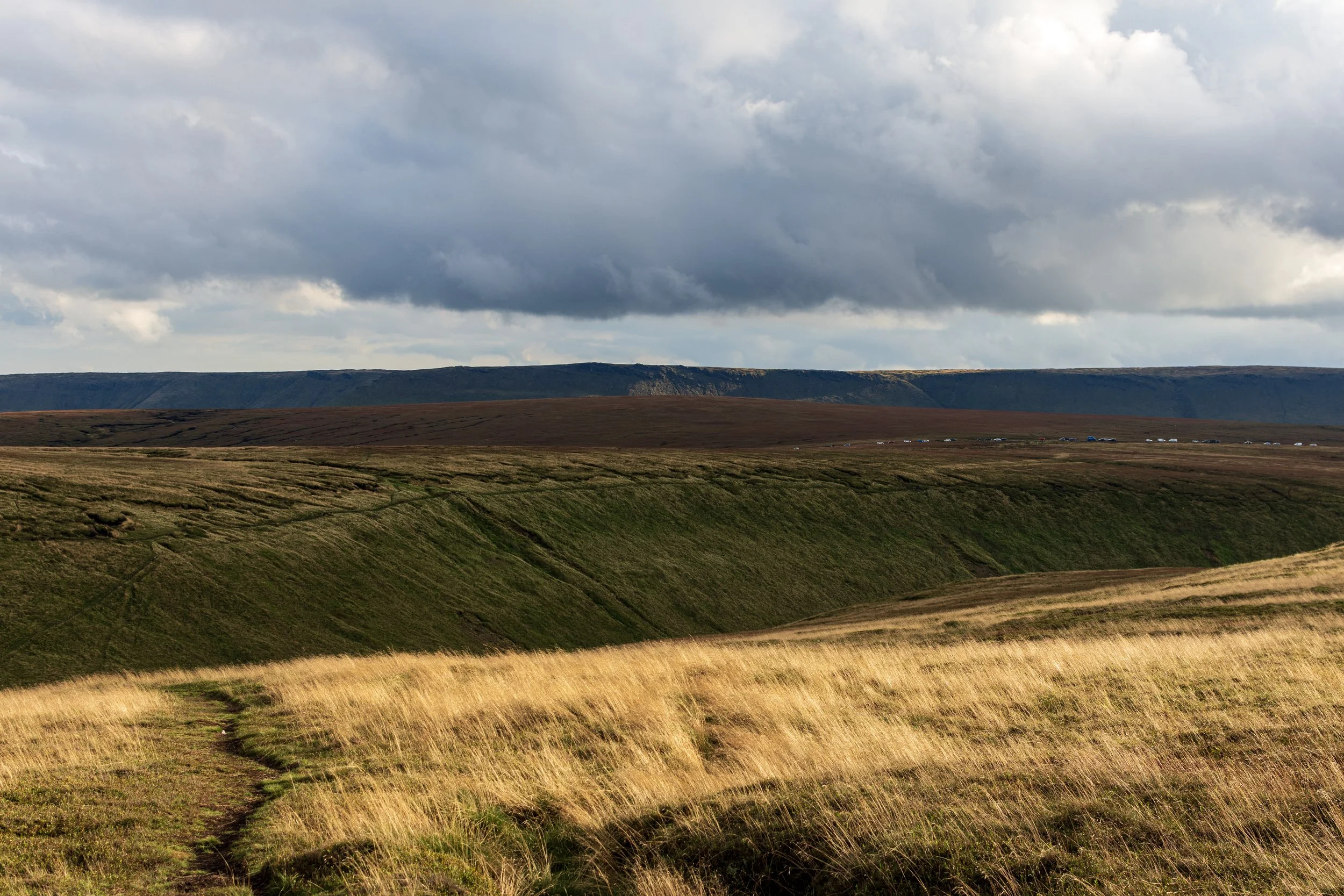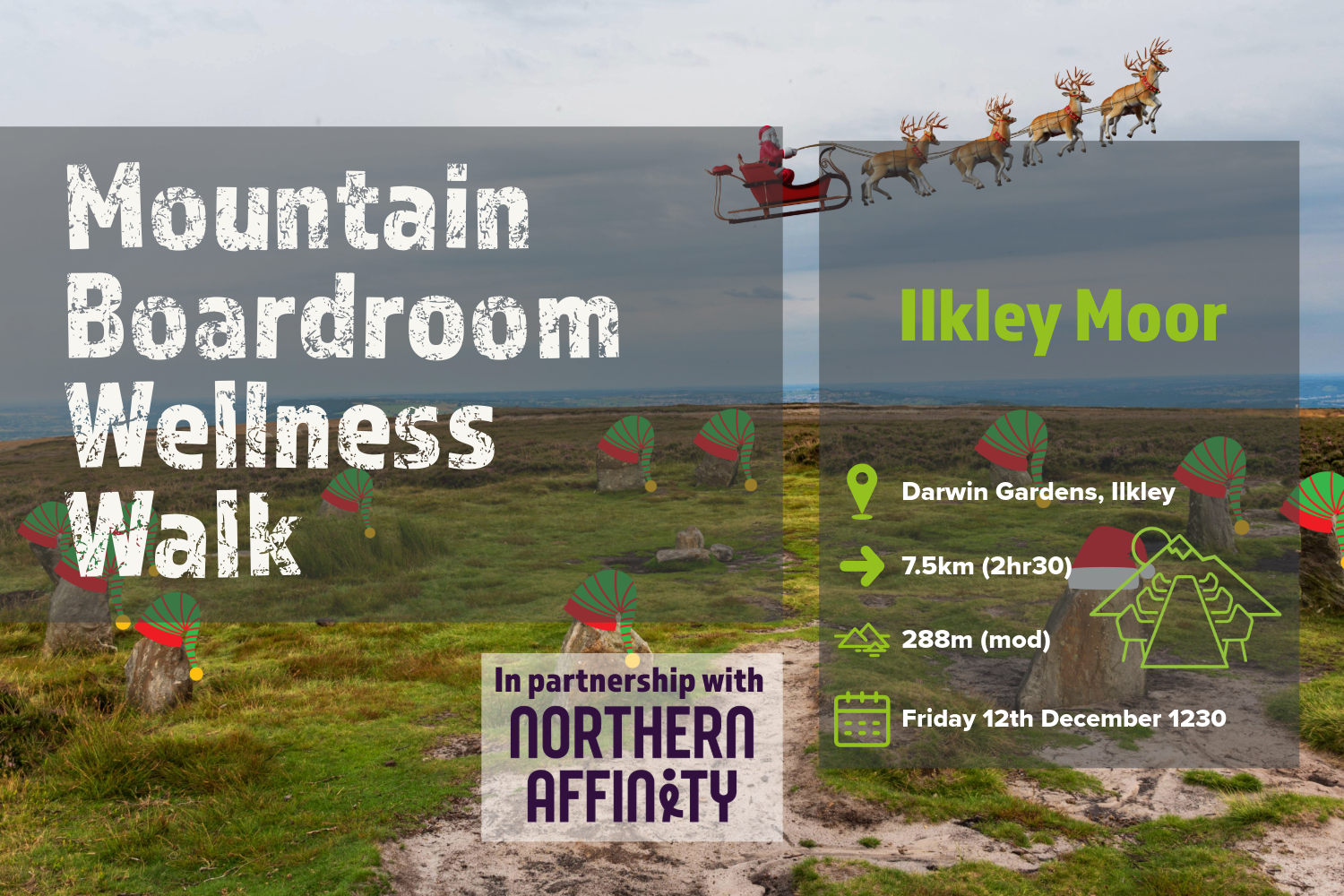Higher Shelf Stones
T trying to reach the absolute top of Higher Shelf Stones
Location: SK 089 948
Getting there: Most will approach from the Snake Pass summit - there are signs to mark the route, but a map is highly recommended. Alternative approach from Glossop, via Lower Shelf Stones
Height (at Trig Point on summit): 621m
Prominence: 20m
Map: OS Explorer OL1 (Peak District - Dark Peak) Get from the Ordnance Survey store
Sitting on the edge of the wide moorland expanse of Bleaklow, this craggy summit offers stunning views over Manchester, and hides a tragic tale in its heathery hags.
Higher Shelf Stones sits proudly above the town of Glossop. Reachable from the town within a couple of hours, a pilgrimage to this viewpoint is a pleasant day out, and rewarded with some absolutely breathtaking views of Glossop, the Hope Valley, and Manchester beyond.
You’re also treated to a view of the Kinder Plateau, dominating the skyline to the south and expanisve views of the Dark Peak to the East
Expansive views of the Peak District from the summit of Higher Shelf Stones
At 621m, Higher Shelf Stones represents the third highest ‘peak’ in the Peak District. This is a tenuous claim, and assumes that we treat the whole of the Kinder Plateau as a single peak, yet treat this separately to the Bleaklow moor that it forms part of. Still, the peak forms one of the three summits in the Derbyshire Three Peaks challenge.
The vast majority of visitors to this summit are usually on a pilgrimage for something else - the plane crash site that hides on the desolate moor just behind the summit. I say ‘hides’, but the large debris field still remains, and in mistier conditions in particular, serves as a very real and sombre reminder of the tradegy that unfolded here decades ago.
On 3rd November 1948, A B29 Superfortress was flying in fog and low cloud, on approach to a USAF air base in Warrington. With no visibility, the crew weere flying by instruments, and believing they had cleared the Peak District hills, miscalculated, and crashed into the ground just behind the summit of Higher Shelf Stones. All 13 people on the crew died in the crash.
To put in perspective, this was a huge plane - the same class as the bomber that dropped the atomic bombs over Hiroshima and Nagaski. The real tradegy is that had the aircraft been about 5-10 metres higher, it would have cleared the summit, and descended into the valley.
Much of the wreckage was too large and remote to recover, so it became a memorial site, with a permanent plaque erected in 1988. The site has become very popular with visitors in recent years, with its relatively accessibility from the Snake Pass summit drawing a lot of people in.
Some of the wreckage of the plane crash site just behind Higher Shelf Stones
Most visitors only come to Higher Shelf Stones for the plane crash site, but there are other points of interest nearby. The area is scattered with ancient burial mounds, and the stunning weather-sculpted rock formations of Hern Stones and Wain Stones are nearby.
Most visitors will park at the Snake Pass summit, and follow the Pennine Way, following signs for the crash site, approaching it from the east. A more direct (but also more arduous) route crosses Crooked Clough, before climbing up to the summit from the south.
To make a day of it, walk up from Glossop, via Yellowslacks Brook, visiting the Hern Stones first, and then returning via the Roman Road of Doctor’s Gate.
Or if you want a bigger challenge, take on the Derbyshire Three Peaks, starting at Hayfield.












